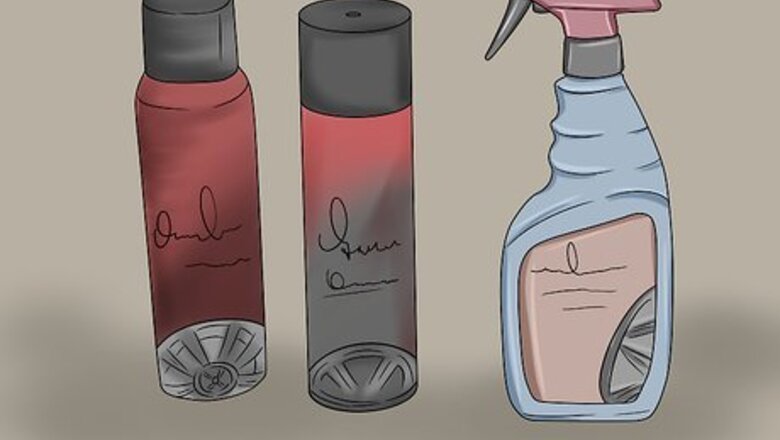
views
Cleaning Them without Water
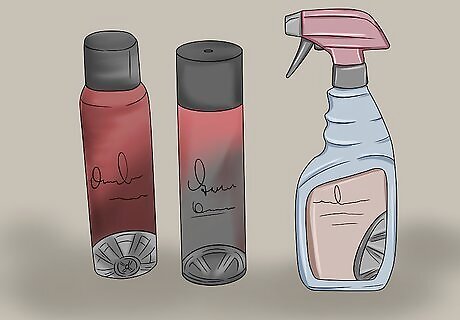
Find a waterless cleaner. You can find a number of waterless cleaners on the market. These cleaners are relatively effective on wheels, and they can make it fast and easy to detail your black rims. Also, you'll need several microfiber cloths throughout the process. Look for one that says "waterless" on the bottle, such as Chemical Guys Waterless Car Wash and Wax. Consider getting black, edgeless microfiber cloths. Because they are edgeless, they are less likely to scratch your rims. Waterless cleaners can be used on any kind of rim. However, make sure it is safe for the type of finish you have, which is most likely a painted aluminum alloy. You don't want to use anything harder than you'd use on your car's finish.
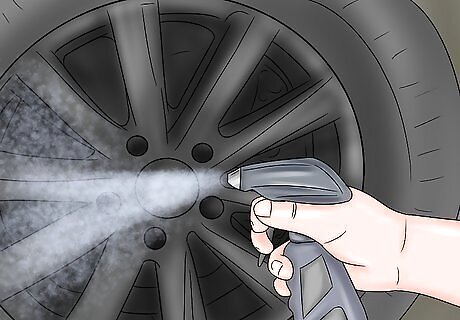
Spray the rim thoroughly. The rim needs to be covered in the cleaner as you start cleaning it. Spray it down well. It doesn't need to be dripping off, but the whole surface of the rim needs to have the cleaner on it so it can start breaking down the gunk.
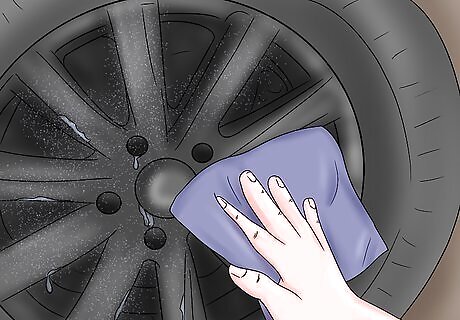
Rub it down. Using the microfiber cloth, rub the rim down. Make sure to get in all the nooks and crannies to get all the dirt out. Rub both the spokes and the inside edges of the wheels, as it can all get dirty from road debris and brake dust.
Cleaning Black Rims with Water
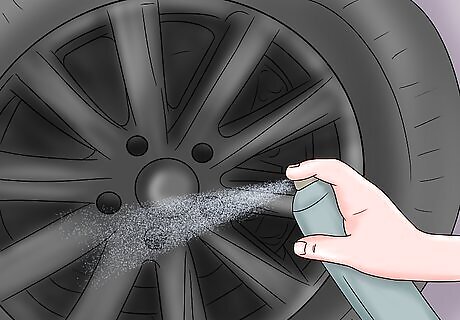
Pick a rim-specific cleaner. The cleaner you use should be designed for cleaning rims. In addition, make sure you pick one that says it can be used on the specific finish you have. For instance, you may have painted aluminum alloy, so make sure it is safe for that material. This type of cleaner will specify that you need to spray the wheel with water or wipe it down with water afterwards. It won't say "waterless."
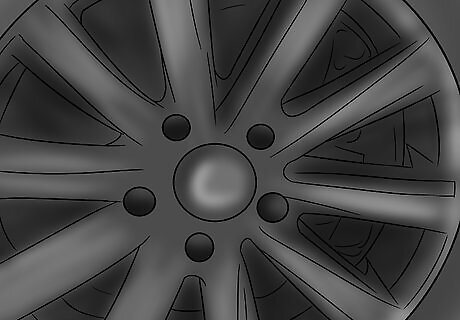
Wet it down. It's important to follow the directions for whatever cleaner you choose to use. However, with most rim cleaners, you spray down the wheel before applying the cleaner. If the directions say not to, though, skip this step.
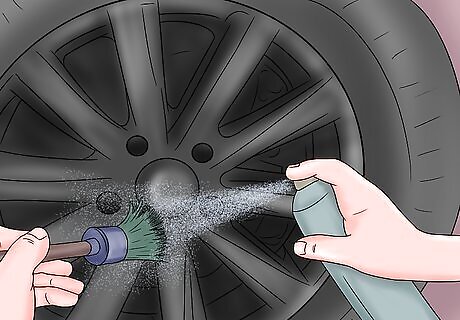
Apply the solution. For many cleaning solutions, all you need to do is spray the cleaner on. For others, you may need to add water and apply it with a sponge or brush. Follow the directions on the bottle for your specific cleaner.
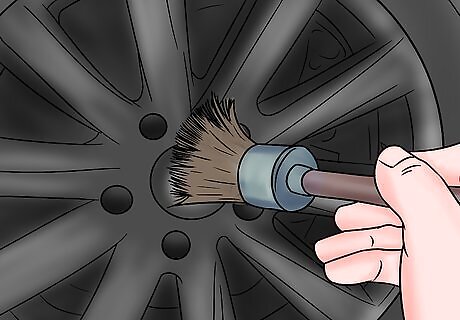
Brush the wheel. Use a brush to suds up the cleaning solution. Make sure you use a brush that's appropriate for that type of finish. For instance, aluminum alloy is fairly delicate, so you don't want anything too abrasive. As you move around the rim, make sure you get in all the crevices.
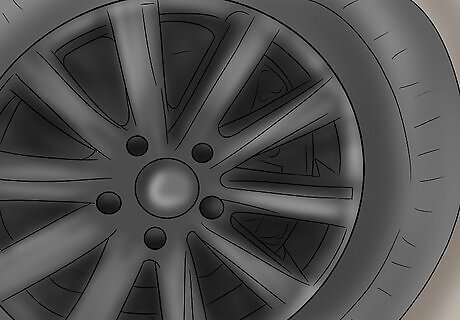
Rinse the rim. Once you've cleaned the rim thoroughly, rinse the solution off. A hose is fine for this purpose. Make sure you get all the soap off, as it can make it difficult to apply the wax if you don't. You can also use a sopping sponge to help get the grime off instead of a hose. The sponge can help get into the crevices.
Finishing the Wheels
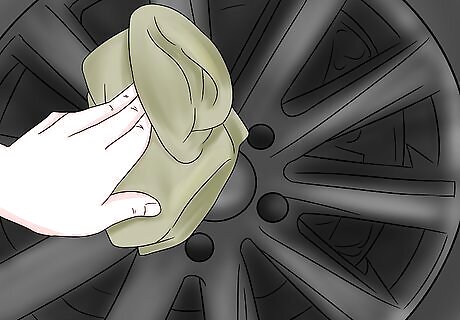
Dry the wheels thoroughly. Once you've washed and rinsed the wheels, make sure to dry them off well, using a dry towel or rag. That way, you pick up any grease left on the rim so that it won't attach itself to the microfiber cloth in next stage.
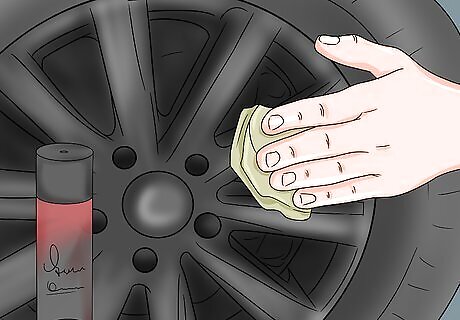
Choose a finish. Usually, you'll spray on a spray wax, such as Final Finish. This finish has wax, of course, but it also contains other additives. The additives are important because they help the finish stay on the wheels for longer than just plain wax. Alternatively, you can use a rub-on wax. Either way, consider using a black wax to keep the wax from leaving white streaks on your black wheels. In fact, if your wheels are a clear gloss painted surface, you can use a black wax like you would use on your car. However, it's best to only use a black wax if your rims are glossy, not matte.
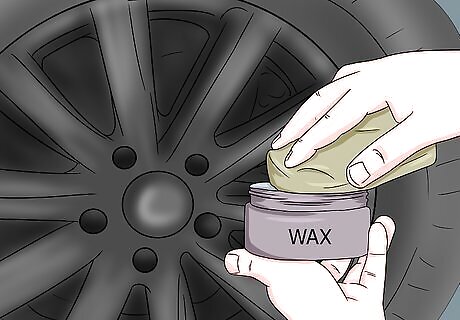
Apply the wax. If you're using a spray-on wax, be sure to use a piece of cardboard or paper to shield the brake pad from the wax, then spray on the wax. For a rub-on wax, use a clean microfiber cloth to rub the wax in. For both kinds of wax, smear it on first, making sure you get it all over the wheel, as well as in all the crevices. Then, with a clean side of the microfiber cloth, buff out any smears, making it shiny. However, if you're using black spreadable wax on glossy wheels, try to avoid getting it in the crevices. Just use an applicator sponge to rub it gently over the surface of the wheel, making sure to get a solid coat.














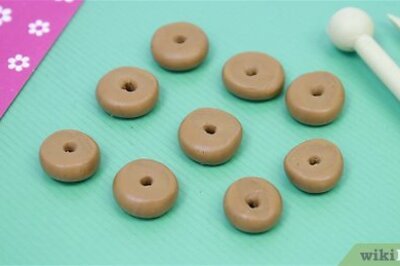
Comments
0 comment